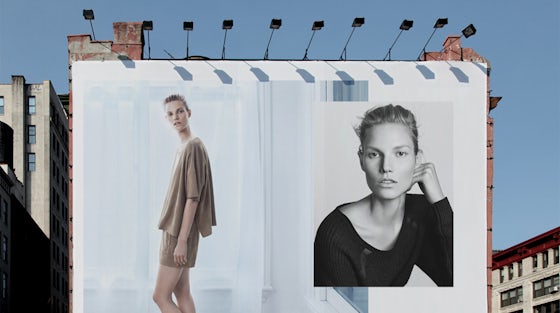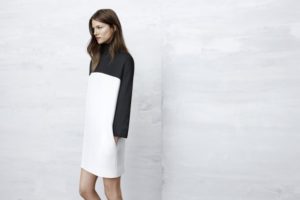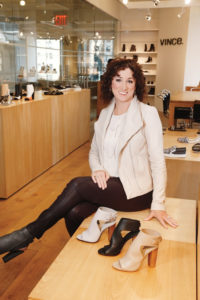
NEW YORK, United States — “Customers are truly passionate about our product. That, at the end of the day, is the key to our success,” said Jill Granoff, chief executive of Vince, the advanced contemporary label, founded in 2002 and best known for its aspirational yet casual and accessibly-priced cashmere hoodies, sweaters and leather jackets. “The fundamental premise was to create a collection of iconic essentials that women would want to wear everyday — and I have to say, everyday is really key to the equation.”
The formula resonated immediately. Vince’s first collection attracted $9.5 million in orders, kicking off an impressive growth trajectory that would see the Los Angeles-based brand become a ubiquitous presence in top-tier department stores across the United States. Just over a decade later, Vince launched a successful IPO on the New York Stock Exchange which valued the company at $726 million, before an opening day surge in stock price turned Vince into a billion-dollar brand.
So how did a brand of accessibly-priced luxury basics spawn the biggest fashion IPO on the New York Stock Exchange since Michael Kors?
“I would say number one was product expansion,” said Granoff (who joined Vince in August 2012, five months before the brand’s founders, Rea Laccone and Christopher LaPolice, exited the company), looking back at the factors which catapulted Vince to success. “We had our core foundation with the knits and the sweaters, but really were able to expand to all product classifications that would address multiple-wear occasions.” Indeed, over the years, Vince methodically added trousers, dresses, denim, leather, hats, scarves, belts, women’s shoes (through a license with Brown Shoe) and, in 2007, menswear. “Two was rolling out and opening additional doors with our key department store partners,” continued Granoff. “And, three, before I got here, the founders did open [own] retail stores and launch a website.”
Today, Vince has a market capitalisation of $1.25 billion. But the company must now answer to the demands of the public market. How will Granoff maintain the kind of growth that Wall Street expects?
“The key in going public is building confidence in the company’s ability to deliver consistent, sustainable growth over time. Wall Street always likes to see that there are a number of different growth opportunities,” answered Granoff. “We knew that we had a foundation from a product perspective, but if you think about the business, it was really a US, wholesale-driven, women’s apparel business,” she added, indicating plenty of room for future growth.
Granoff outlined a six-point strategy, “to win with product, maximize wholesale, accelerate [own] retail and e-commerce, expand internationally, build brand awareness and achieve organisational and operational excellence.” 
Retail Expansion
Vince was largely built in department stores and expanding the company’s direct-to-consumer business presents a major opportunity for the brand. “This year, two years later, our wholesale business will be 75 percent of the total and our direct-to-consumer business will be 25 percent. Obviously, our wholesale business has continued to grow, but we are growing our direct-to-consumer business faster.” The brand now operates 28 retail stores and has invested in upgrading its e-commerce presence. “In all candour, it wasn’t a huge investment, but it really moved the needle. We still have a lot of opportunity on the website, so we will be enhancing it further. Our web sales will be probably quadruple from what they were when I joined, as a result of focusing on this channel and having the team in place,” said Granoff.
International Markets
As for international expansion, Granoff estimates that approximately two-thirds of its current distribution network remains US-based and “today less then 10 percent of our business is done in the international market, even though we sell to 48 countries,” leaving significant room for growth. “We have focus areas, including Hong Kong, [mainland] China, Western Europe and the Middle East. We are currently number one with Bloomingdales Dubai and Harvey Nichols Dubai and we have a lot of Middle Eastern tourists shopping our stores in the US, so we want to capitalise on the outsize growth we are seeing in the region, which is booming,” she said. The brand will soon open a Paris showroom and has signed on a director of European wholesale to drive expansion.
Brand building is another priority for Granoff. As a consequence of its focus on department stores, Vince’s brand awareness levels are relatively low. “We conducted some consumer research and what we identified was that we had pretty low brand awareness. Most of our competitors were significantly higher,” said Granoff. “But although our awareness levels were low, affinity and purchase intent were actually the highest of the entire competitive set, which said to say, those that know us, love us, wear us and want to buy us. That was really exciting,” she continued. “That we have such low awareness with such high affinity and purchasing intent means that if we can just build our awareness, we should really be able to expand Vince.”
“We will continue to invest in co-op advertising with department store partners, but in addition to that we are doing more retail lookbooks. We find a very high ROI on these. It showcases the product and the whole look and feel of the brand, which can then be put online. We are also investing more in digital marketing as we look to accelerate our e-commerce growth and outdoor advertising in select markets, as well as more ads in national print publications.”
“I think what is great is that we have been able to achieve the success without [high brand awareness], so in some ways, hopefully this becomes the icing on the cake — the cake always being the strength of our product assortment.”
Product Assortment
As Vince primes for continued growth, the brand’s assortment — the foundation of its success — is also set to expand. “We believe that Vince can grow 15 to 20 percent, top line, for the foreseeable future,” said Granoff, identifying two product categories she intends to push. Firstly, menswear: “Our business is about 85 percent women’s, 15 percent men’s; obviously, we feel the men’s penetration can be significantly higher than it is today as we begin to roll out additional product classifications and open [men’s] shops.”
Additionally, Vince is planning to push its footwear lines and expand its accessories business into handbags (which may, in turn, lead to small leather goods). “We see a sweet-spot between $500 and $1000; with designer bags the price has really escalated, they can be thousands of dollars now and, then, on the other side, we see the more mainstream brands offering bags below $500. We see a void in the market between those two price points.”
Last year, Granoff appointed Karin Gregersen — a 13-year veteran of Chloé with significant experience building successful handbag lines — to the position of president and chief creative officer. And, while it’s clear that Vince has several powerful levers for growth, it’s telling that Granoff’s six-point plan begins with product, which, ultimately, lies at the core of the company’s billion-dollar success.
Discover more from ReviewFitHealth.com
Subscribe to get the latest posts sent to your email.

